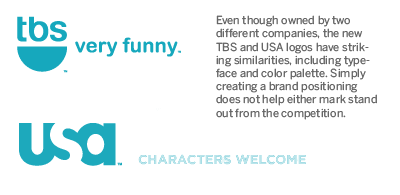Television broadcasting has become an increasingly crowded marketplace. During the mid twentieth century, only a handful of networks dominated the airwaves and established strong, immediately recognizable identities. The CBS “eye”, the NBC “peacock” and the four circles of ABC are all extremely effective because of their simplicity, consistent application and memorability—so much so, in fact, that they have changed very little, if at all, over the past fifty years.
Today, digital cable and satellite have created hundreds of different channels for viewers to choose from. In order to stand out from their competition and entice viewers to tune in, cable networks subscribe to the idea that developing a clearly defined “brand position” will help them achieve the same success as broadcast stations mentioned above. Taglines such as “We Know Drama,” “Very Funny” or “Characters Welcome” have become common ways in which these new networks try to attract and retain viewers.
The idea of creating a “brand position” is not a bad one; after all, effective branding encompasses every aspect of a company, its products, or services—its visual identity as well as the emotional connotations its customers may have. It takes several years build a successful brand. Unfortunately, cable networks are too busy mimicking each other’s attributes or reinventing themselves every couple of years that they do not give the time necessary for a brand to become ingrained in the consumers’ psyche.

USA Network, not to be outdone, recently introduced a new identity that looks somewhat similar to the new TBS. It too is rendered in lowercase letters, with the “s” formed by the negative space between the “u” and “a”. Bearing a slight resemblance to two puzzle pieces coming together, the mark says nothing about the network or the type of programming it provides. How it relates to the idea of “characters welcome” gets lost in the overall execution. Unfortunately, their previous brand was much more unique and effective.

By: Ryan Hembree



